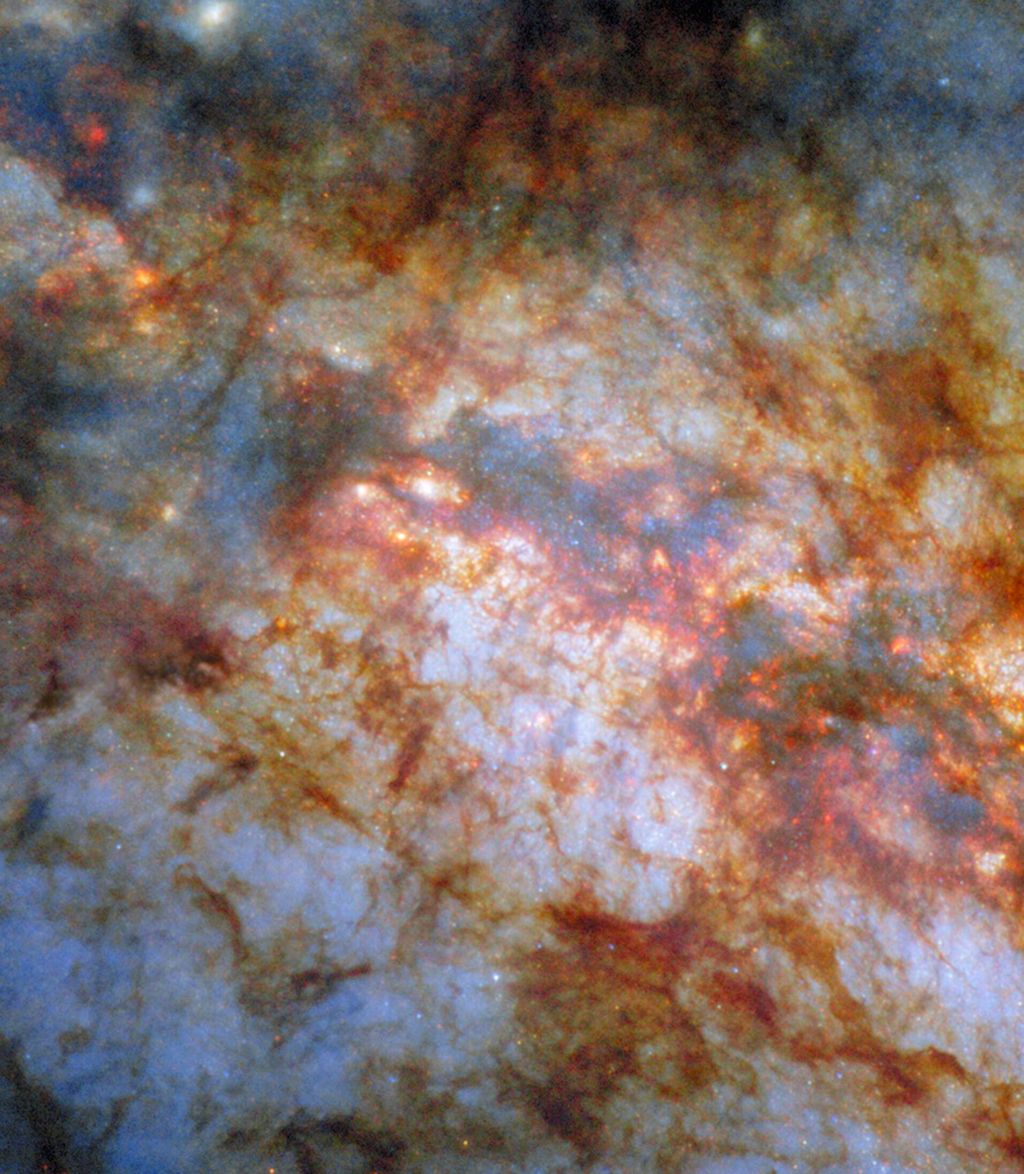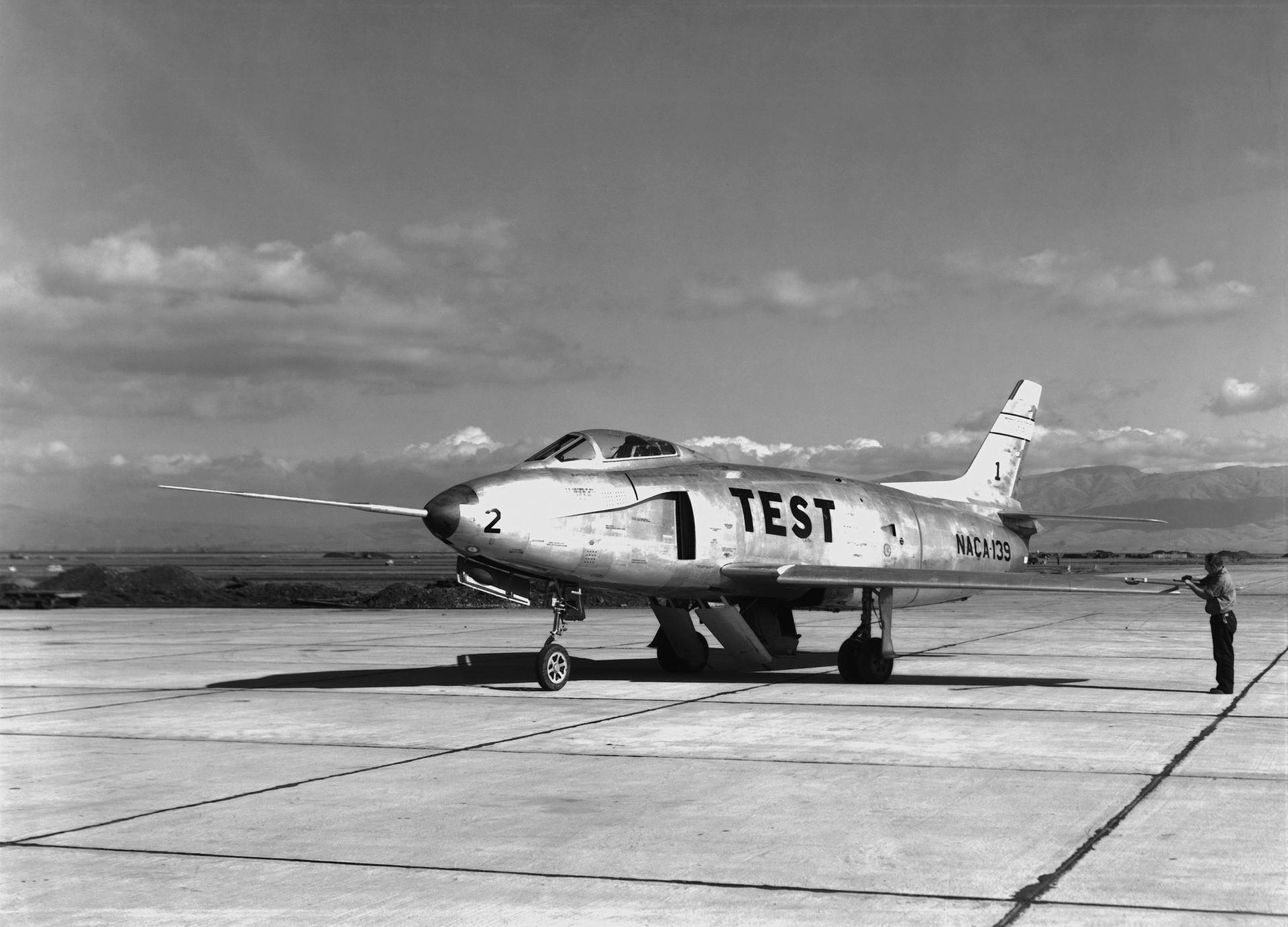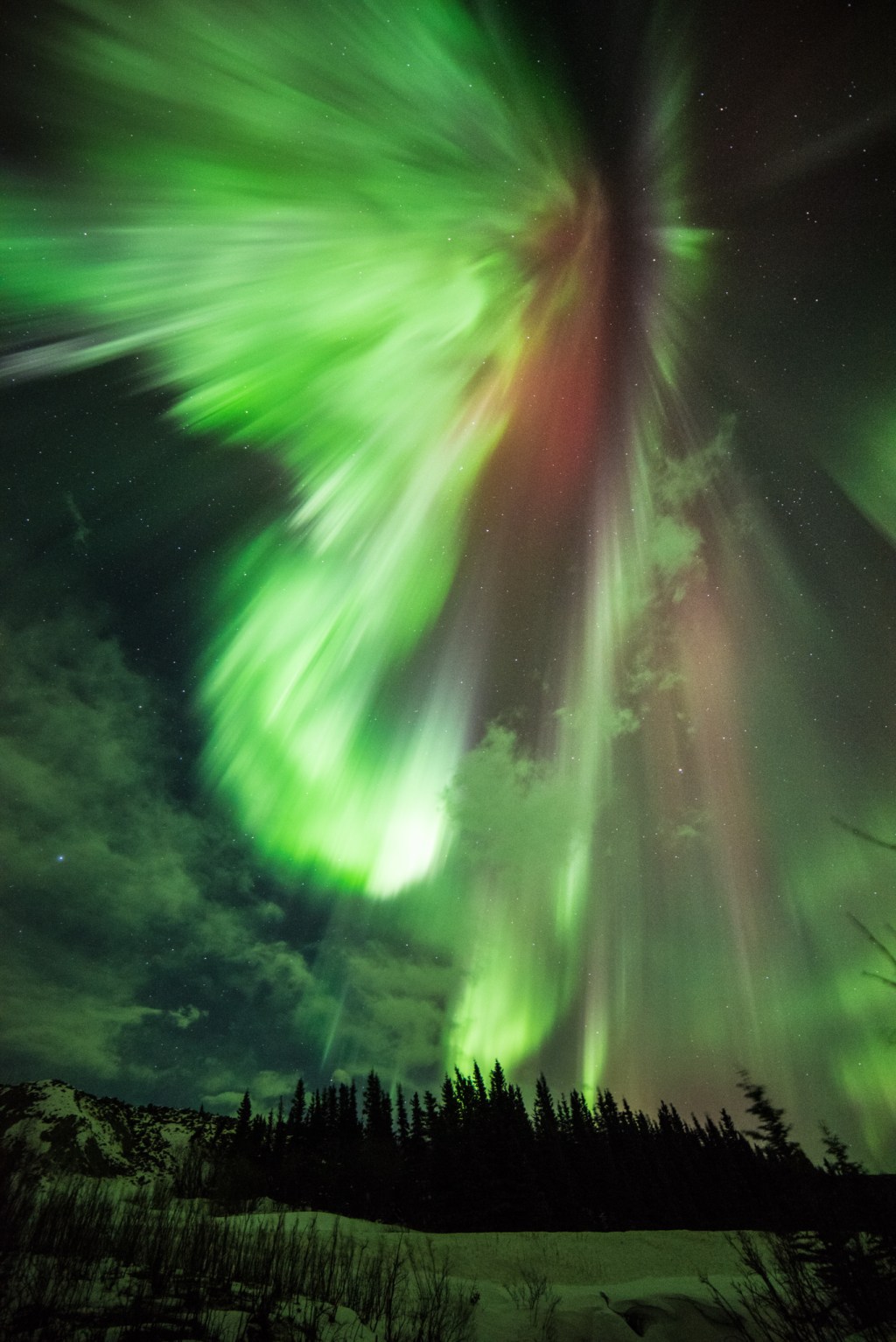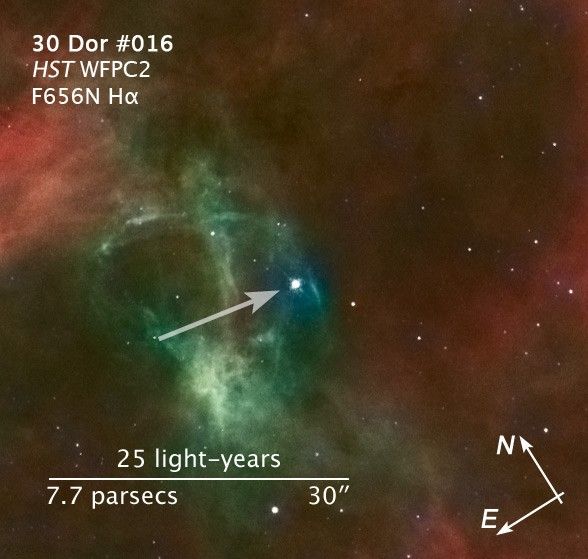1 min read
Astronomers Nab Runaway Star
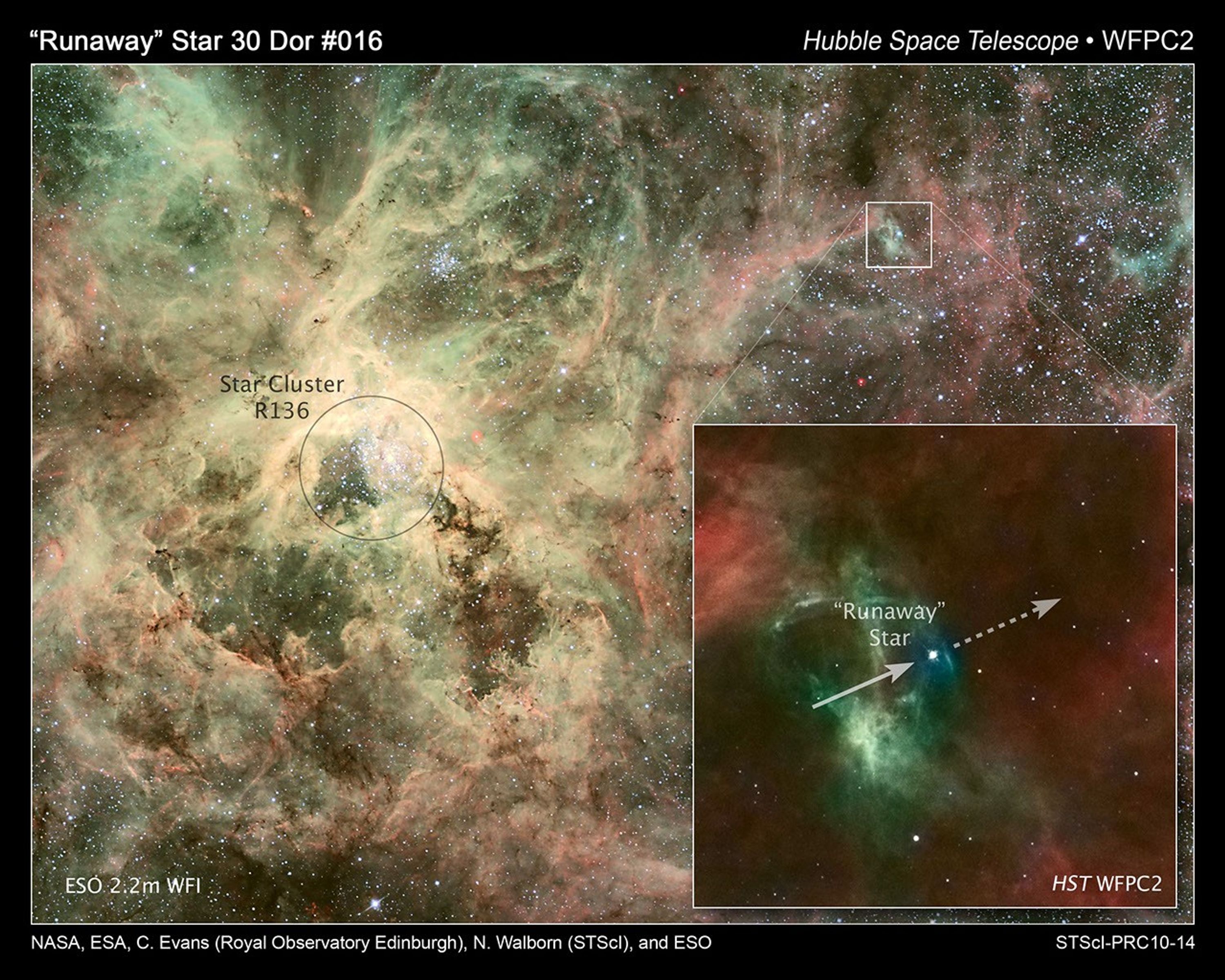
This image of the 30 Doradus nebula, a rambunctious stellar nursery, and the enlarged inset photo show a heavyweight star that may have been kicked out of its home by a pair of heftier siblings.
In the inset image at right, an arrow points to the stellar runaway and a dashed arrow to its presumed direction of motion. The image was taken by the Wide Field and Planetary Camera 2 (WFPC2) aboard NASA's Hubble Space Telescope. The heavyweight star, called 30 Dor #016, is 90 times more massive than the Sun and is traveling at more than 250,000 miles an hour.
In the wider view of 30 Doradus, the homeless star, located on the outskirts of the nebula, is centered within a white box. The box shows Hubble's field of view. The image was taken by the European Southern Observatory's (ESO) Wide Field Imager at the 2.2-meter telescope on La Silla, Chile.
The young star, only 1 million to 2 million years old, may have traveled about 375 light-years from its suspected home in R136, the bright star cluster marked by a circle. Nestled in the core of 30 Doradus, R136 is one of the most massive young star clusters in nearby galaxies, containing several stars topping 100 solar masses each. 30 Doradus, also called the Tarantula Nebula, resides roughly 170,000 light-years from Earth, in the Large Magellanic Cloud.
Instruments at three observatories, including Hubble's WFPC2 and recently installed Cosmic Origins Spectrograph, have provided tantalizing clues that the star was ejected from R136.
In the ESO and WFPC2 images, hot stars are represented by the color blue. Hydrogen is in red and oxygen in green. Radiation from the runaway star is making the nebula glow.
The Hubble image was taken on June 30, 1995; the ESO image was released in December 2006.
The runaway star research team consists of C. Evans, V. Henault-Brunet, and W. Taylor (Royal Observatory Edinburgh); N. Walborn and D. Massa (Space Telescope Science Institute, Baltimore); D. Lennon (European Space Agency/Space Telescope Science Institute); P. Crowther (University of Sheffield, UK); I. Howarth (University College London); H. Sana (ESO/University of Amsterdam); and J. van Loon (Keele University, UK).
About the Object
- R.A. PositionR.A. PositionRight ascension – analogous to longitude – is one component of an object's position.05h 37m 8.87s
- Dec. PositionDec. PositionDeclination – analogous to latitude – is one component of an object's position.-69° 7' 20.35"
- ConstellationConstellationOne of 88 recognized regions of the celestial sphere in which the object appears.Dorado
- DistanceDistanceThe physical distance from Earth to the astronomical object. Distances within our solar system are usually measured in Astronomical Units (AU). Distances between stars are usually measured in light-years. Interstellar distances can also be measured in parsecs.170,000 light-years (52,000 parsecs)
About the Data
- Data DescriptionData DescriptionProposal: A description of the observations, their scientific justification, and the links to the data available in the science archive.
Science Team: The astronomers who planned the observations and analyzed the data. "PI" refers to the Principal Investigator.The 30 Doradus "runaway" star image is based on Hubble WFPC2 data from proposal 5584: J. Walsh (ESO/ST-ECF), et al. This image was combined with a ground-based ESO 2.2-m WFI image of the Tarantula Nebula by J. Alves (Calar Alto, Spain), and B. Vandame and Y. Beletski (ESO). Filters in the ESO image include: B, V, H-alpha and [O III]. - InstrumentInstrumentThe science instrument used to produce the data.HST>WFPC2 (inset), and ESO 2.2-m WFI
- Exposure DatesExposure DatesThe date(s) that the telescope made its observations and the total exposure time.June 30, 1995, Exposure Time: 30 minutes (inset)
- FiltersFiltersThe camera filters that were used in the science observations.ESO: B, [O III], V, and H-alpha WFPC: F656N (H-alpha)
- Object NameObject NameA name or catalog number that astronomers use to identify an astronomical object.Tarantula Nebula, and 30 Dor #016 (inset)
- Object DescriptionObject DescriptionThe type of astronomical object.Massive Runaway Star in the Large Magellanic Cloud
- Release DateMay 11, 2010
- Science ReleaseHubble Catches Heavyweight Runaway Star Speeding from 30 Doradus
- Credit

This image (inset) is a composite of two separate exposures made by the WFPC2 instrument on the Hubble Space Telescope along with ground-based observations. In total, two filters were used to sample narrow wavelength emission and two filters were used to sample broadband emission. The color results from assigning different hues (colors) to each monochromatic image. In this case, the assigned colors are: Blue: ESO B Green: ESO [O III] + V Red: ESO H-alpha Luminosity*: WFPC2 F656N (H-alpha) *The higher resolution, black-and-white Hubble image and the lower resolution, color ESO images were combined using a technique that takes luminosity (brightness) information from the black-and-white ACS image and color information from the composite ESO image. This preserves all of the higher resolution detail from the Hubble data while rendering a color image representing the physical processes in this active region of space.

Related Images & Videos

Hubble Observations of Massive Stars in the Large Magellanic Cloud
This is the Hubble Space Telescope Cosmic Origins Spectrograph (COS) observation of 30 Dor #016 compared with one by the Hubble Space Telescope Imaging Spectrograph (STIS) of the similar star HDE 269810, also in the Large Magellanic Cloud. The stellar-wind features of helium,...
Share
Details
Claire Andreoli
NASA’s Goddard Space Flight Center
Greenbelt, Maryland
claire.andreoli@nasa.gov




